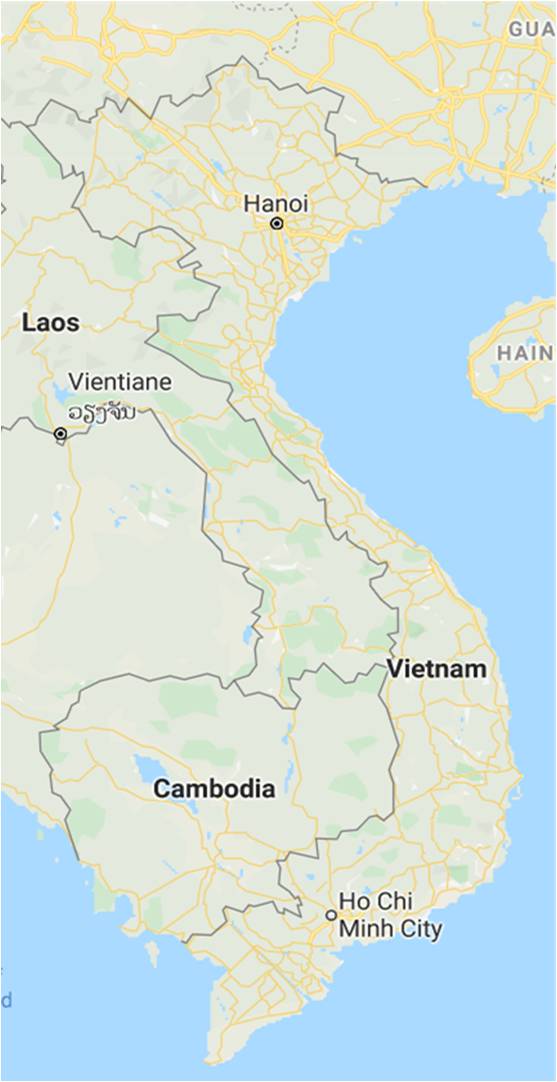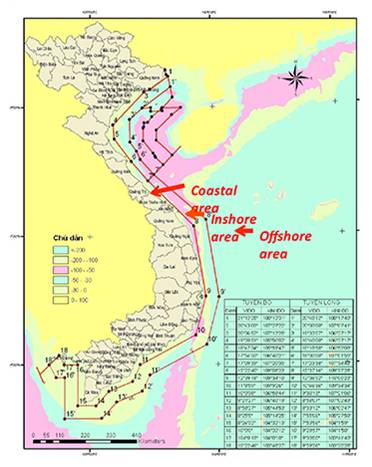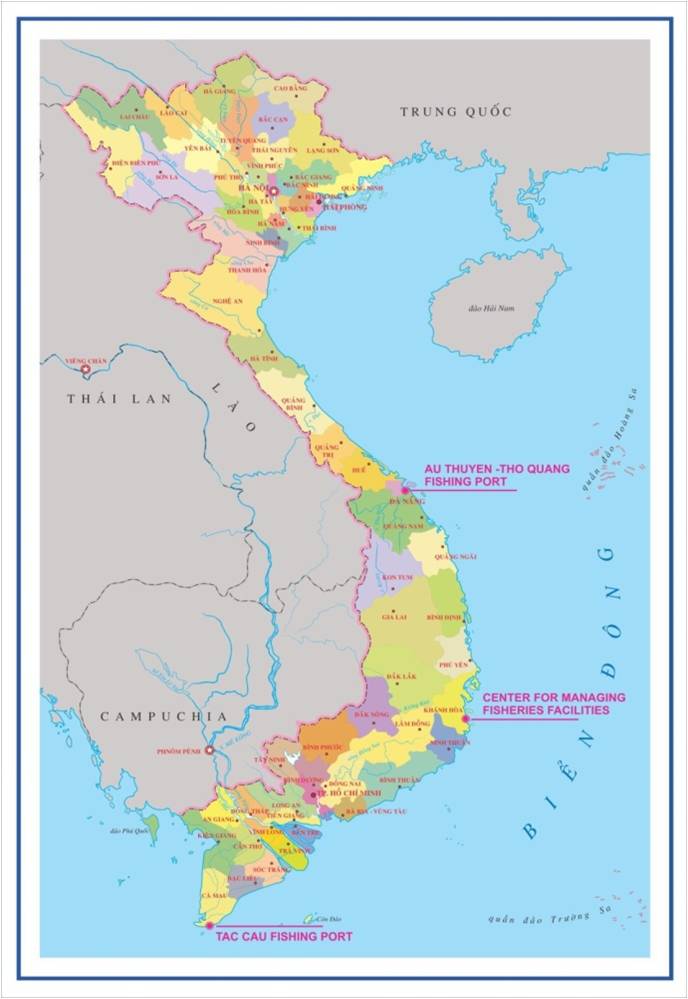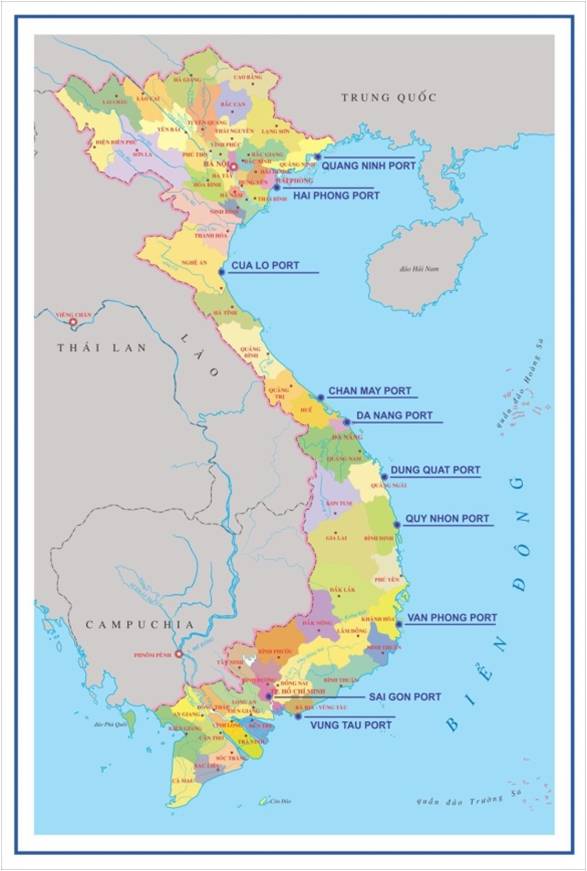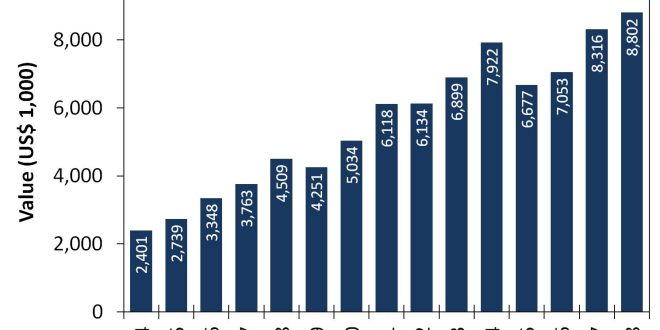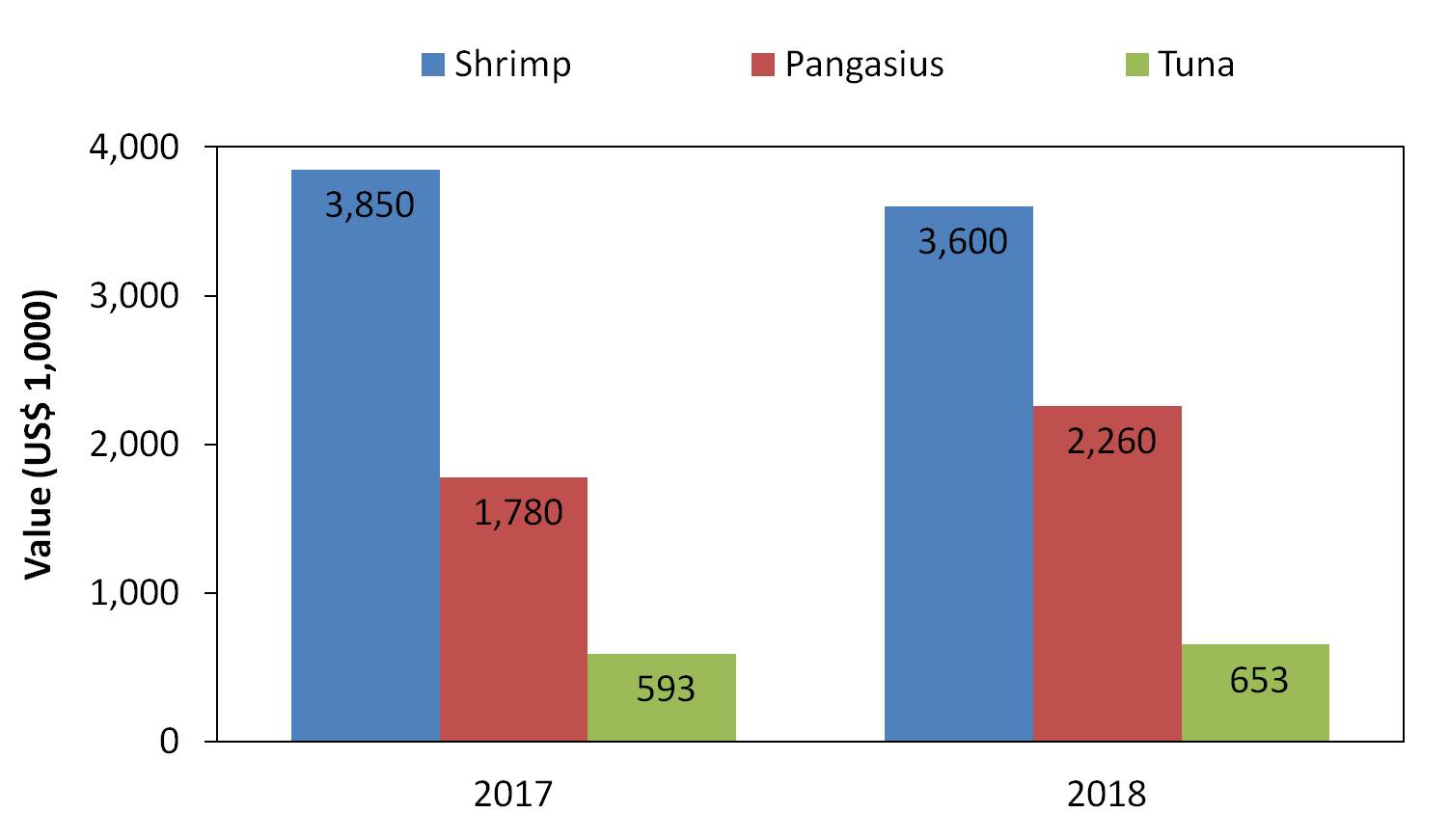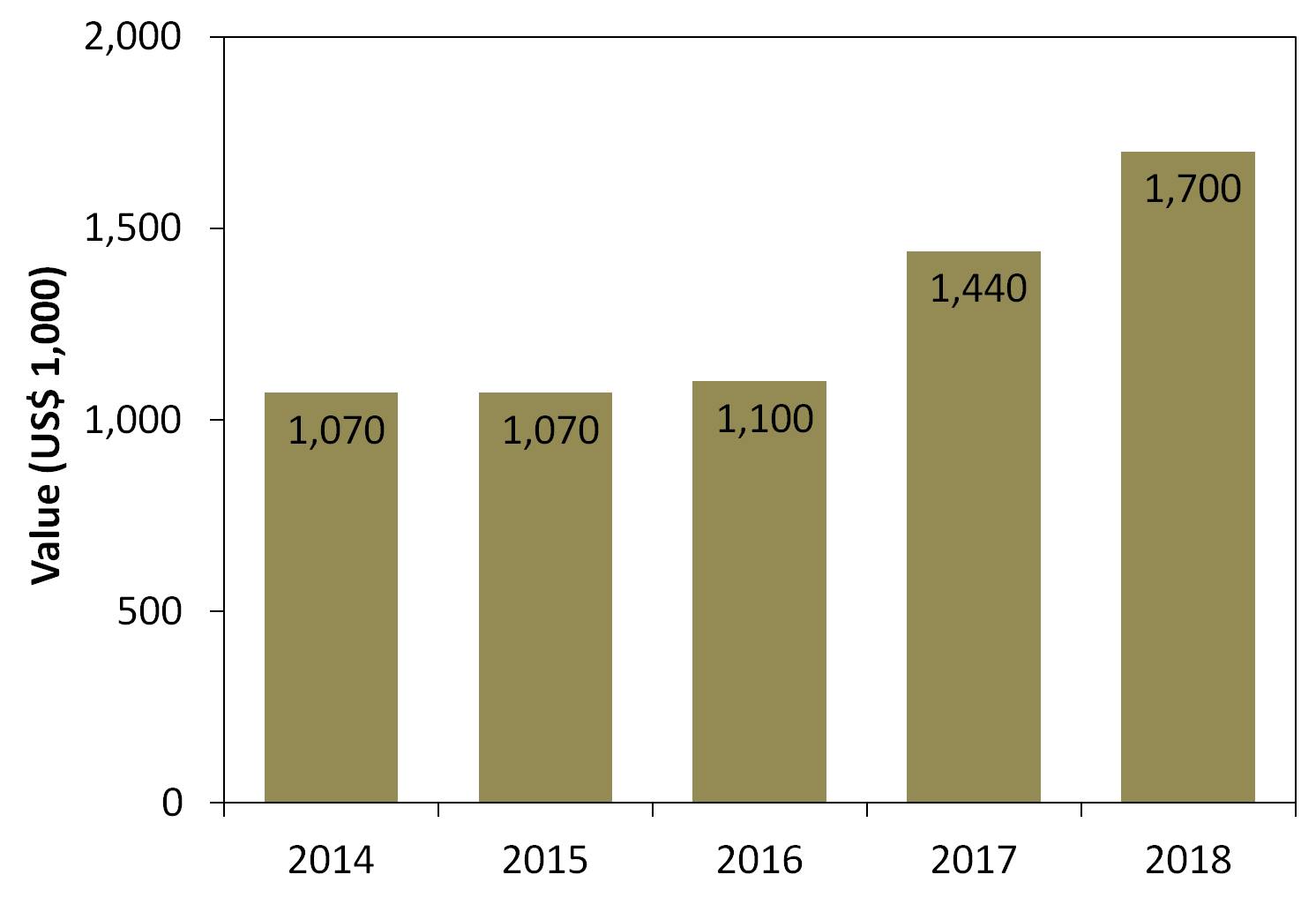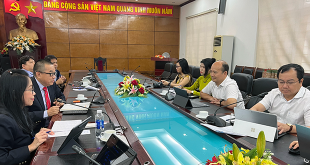By Vu Thi Phuong Thanh, 2019 Regional Fisheries Policy Network (RFPN) for Viet Nam
INTRODUCTION
Viet Nam is located in the west side of the South China Sea with an area of more than 331,000 km2 and coastline of about 3,260 km (Figure 1). The country has about 2,370 rivers including the Red River with basin area of about 1.9 million ha and the Mekong River with basin of about 4.1 million ha. Most of the reservoirs were built and developed about 30 years ago for electricity production, rice cultivation, and flood control. In 2019, Viet Nam had a human population of about 96 million.
FISHERIES SECTOR
The Directorate of Fisheries (D-Fish) under Ministry of Agriculture and Rural Development is the responsible government agency for the development and management of the fisheries sector of Viet Nam. The D-Fish is composed of eight departments and three centers, namely: Administration Department, Planning and Financial Department, Scientific and Technological and International Cooperation Department, Department of Aquaculture, Department of Capture Fisheries, Department of Legislation and Inspection, Department of Aquatic Resources Conservation and Development, Department of Fisheries Resources Surveillance, Fisheries Information Center, Registration of Fishing Vessels Center, and Analysis and Verification Center for Aquaculture. Moreover, there are sub-departments in provincial level that regulate fisheries management in respective provinces.
In 2018, the agriculture, forestry, and fisheries sectors accounted for 14.6 % of the country’s GDP and it is forecasted that the seafood consumption in 2020 is going to be 35 kg per capita. The fisheries sector is categorized into marine capture fisheries and aquaculture (freshwater, brackish water, and marine). From 1995 to 2018, the quantity of fisheries production has maintained an increasing growth rate of 9.07 % per year (Figure 2).
For marine capture fisheries, the three fishing areas include: A) Coastal area (11 km from the coastal line which is the fishing zone for vessels with length less than 12 m), B) Inshore area (43 km from coastal line which is the fishing zone for vessels between 12 m and 15 m in length); and C) Offshore area (from the inshore area to the outer boundary of the exclusive economic zone which is the fishing zone for vessels with more than 15 m in length) (Figure 3). The fishing areas are regulated under the Government Decree No. 26/2019/ND-CP which serves as the guide on implementing the Fisheries Law 2017. In order to comply with the international standard, Viet Nam shifted the management of fishing vessels by measuring from engine horse power to length. Moreover, fishing vessels with less than 6 m in length are managed at the commune level according to the revised 2017 Fisheries Law. In 2018, the total number of registered fishing vessels was 95,847 (Figure 4).
For aquaculture, there are more than 500,000 freshwater and marine fish farms occupying a total area of more than 1 million ha. The major cultured species include Pangasius, brackish shrimp, giant tiger prawn, and white leg shrimp. The country generated an estimated US$ 3.0 billion per year from aquaculture and more than 1.6 million people had been employed full-time with a majority of women (Communist Review, 2010).
FISHERIES TRADE
In the fisheries supply chain, the middlemen serve as bridge between the fishers/fish farmers and processors. For capture fisheries, the middlemen collect the catch right after landing at a fishing port and send to processors (Figure 5). Also, the middlemen lease their fishing vessels to fishers or hire the crew.
For aquaculture supply chain, the Government has issued the policy Plan No. 6390/KH-BNN-KTHT in 2018 which emphasized the direct connection between production and processing (Figure 6). However, the middlemen still intervene and control the price (Thuy, 2019). Also, the middlemen provide capital to fish farmers.
Furthermore, there are 82 fishing ports all over Viet Nam which are located in 27 coastal provinces. The major fishing ports include Au Thuyen-Tho Quang Fishing Port in Da Nang Province, Center for Managing Fisheries Facilities in Khanh Hoa Province, and Tac Cau Fishing Port in Ca Mau Province (Figure 7). The fish and fishery products are transported from the processing facilities and exported through cargo ports. There are 49 cargo ports in the country and the location of 10 major cargo ports (LEC GROUP, 2019) as shown in Figure 8.
EXPORT OF FISH AND FISHERY PRODUCT
In the recent years, the country’s seafood export turnover ranked the fourth among the major export products which are textiles, footwear, and crude oil. Moreover, Viet Nam ranks among the top ten seafood exporters in the world. In 2018, approximately US$ 8.3 million of fish and fishery products were exported to more than 160 countries (Figure 9). The top three fisheries commodities include shrimp (giant tiger prawn and white leg shrimp), Pangasius, and tuna (yellowfin tuna, bigeye tuna, longfin tuna, southern bluefin tuna, and tripped melon tuna) (Figure 10).
IMPORT OF FISH AND FISHERY PRODUCTS
The overexploitation of fishery resources led to the low supply of raw materials for fisheries processing. Thus, the imported products are intended to augment the raw materials. In 2018, the country imported fish and fishery products with the value of around US$ 1.7 million (Figure 11).
INTERNATIONAL TRADE AGREEMENT
The following is the list of bilateral and multilateral trade agreement signed by Viet Nam:
- Japan -Viet Nam Economic Partnership Agreement (25 December 2008)
- Viet Nam-Chile Free Trade Agreement (11 November 2011)
- Viet Nam- Korea Free Trade Agreement (5 May 2015)
- Viet Nam- Eurasian Economic Union (29 May 2015)
- Viet Nam- EU Free Trade Agreement (30 June 2019)
- ASEAN Free Trade (1995)
- ASEAN- China Free Trade Area (November 2002)
- ASEAN- Korea Free Trade Area (2005)
- ASEAN- Japan Free Trade Area (April 2008)
- ASEAN- India Free Trade Area (8 October 2003)
- ASEAN- Australia/New Zealand Free Trade (27 February 2009)
- ASEAN- Hong Kong Free Trade Area (12 November 2017)
- Comprehensive and Progressive Agreement for Trans-Pacific Partnership (4 February 2016)
ISSUES ON FISHERIES TRADE
The major issues of the fisheries trade of Viet Nam are the following:
- High cost of inspection of raw materials for processing fish and fishery products for export
- Non-compliance with international certifications (g., ISO, Best Aquaculture Practices or BAP, Aquaculture Stewardship Council or ASC), among others of the quality of exported fish and fishery products
- Non-standardized traceability of fish and fishery products for export
LAWS ON FISHERIES TRADE
The following are the laws in Viet Nam that are related to fisheries trade:
- Law No. 10/2012/QH13 on labor
- Decree No.59/2005/ND-CP on conditions for a number of aquatic resource production and business lines
- Decree No.14/2009/ND-CP on amendment of articles of the Decree No.59/2005 on conditions for production and business of aquatic products
- Law No. 55/2010/QH12 on food safety
- Decree No. 66/2016/ND-CP on regulations on protection and quarantine of flora, plant varieties, common wild animals, aquatic animals, food, and husbandry
- Law No. 05/2017/QH14 on foreign trade management
- Decree No. 06/2019/ND-CP on management of endangered, precious, and rare forest flora and fauna and implementation of the convention on international trade of endangered wild animals and plants
- Circular No. 09/2018/TT-BTC amending Circular No. 284/2016/TT-BTC on fee of quality control on fishery supplies
- Revised Fisheries Law – a chapter on fisheries resources surveillance was added to shift from open access to sustainable fisheries management and to meet the requirements of international markets
WAY FORWARD
The Government of Viet Nam has issued the Decision No. 1445/QD-TTG on 16 August 2013. The Decision covered major programs/projects, namely: 1) Vietnam Master Plan on Aquatic Development to 2020, with a vision to 2030; 2) population relocation and construction of coastal fishing community and islands according to criteria for developing countryside; and 3) Development of Community Fisheries Management. Moreover, to enhance the fisheries trade, the Government would also implement the “Viet Nam Marine Development Strategy to 2030” which was approved by the Decision No. 1690/QD-TTg/2019. Through the programs/projects, the following are the targets of the Decision for 2030:
- around 9 million t of fisheries production, which would be composed of 30 % from capture fisheries and 70 % from aquaculture;
- around US$ 20 million of export value of aquatic products with an average growth rate of 6-7 % per year during 2020-2030;
- export 1.75 million t (US$ 4-6 million) products from mariculture;
- export 60 % of value-added products; and
- enhance the capacity of 80 % of fishery laborers.
REFERENCES
Communist Review. (2010). Chinh Sach Doi Voi Phu Nu Nong Thon Trong Thoi Ky Cong Nghiep Hoa-Policy for Women in Rural Area in Industrialization Period. Ministry of Labour-Invalids and Social Affairs. Retrieved from http://molisa.gov.vn/Pages/tintuc/chitiet.aspx?tintucID=20857.
LEC GROUP. (2019). Thông Tin Cộng Đồng Community Information: Retrieved from https://lecvietnam.com/hoat-dong/thong-tin-cong-dong/top-10-cang-bien-lon-nhat-viet-nam-111.html.
Thuy, N. (2019). Nuoi Thuy San-Aquaculture. Tong Cuc Thuy San-Directorate of Fisheries, Viet Nam. Retrieved from https://tongcucthuysan.gov.vn/vi-vn/nu%C3%B4i-tr%E1%BB%93ng-th%E1%BB%A7y-s%E1%BA%A3n/-nu%C3%B4i-th%E1%BB%A7y-s%E1%BA%A3n/doc-tin/013544/2019-09-20/phat-trien-chuoi-gia-tri-ngheu-tai-mot-so-tinh-dong-bang-song-cuu-long.
Tuong Phi Lai; Pham Ngoc Tuan; Nguyen Thi Dieu Thuy; Duong Long Tri; Pham Thi Hong Van. (2009). Fisheries Subsidies, Supply Chain and Certification in Viet Nam. Ha Noi: United Nations Enviroment Programme (UNEP) Division of Technology.
VASEP. (2019). Tong Quan Nganh Thuy San-Generel View of Fisheries. Viet Nam Association of Seafood Exporters and Producers-Tong Quan Nganh. Retrieved from http://vasep.com.vn/1192/OneContent/tong-quan-nganh.htm
Vector6. (2016). Vector map of Viet Nam. Retrieved from https://vector6.com/vector-ban-viet-nam/.
ACKNOWLEDGMENTS
The author would like to express her sincere thanks to her colleagues at the Directorate of Fisheries of Viet Nam for the support and provision of the data on fisheries profile of Viet Nam. She is grateful to Ms. Virgilia Sulit and Dr. Shiela Villamor Chumchen from SEAFDEC for their guidance and advices in improving this article. The last but not the least, she is thankful to Ms. Pattaratjt Kaewnuratchadasorn and 2019 RFPN Members for the help and encouragement throughout the year.
ABOUT THE AUTHOR
Ms. Vu Thi Phuong Thanh is an Officer at the International Cooperation Division of the Department of Fisheries Resources Surveillance (www.tongcucthuysan.gov.vn). She can be reached at No.10 Nguyen Cong Hoan, Ngoc Khanh, Ba Dinh District, Ha Noi City, Viet Nam with telephone/fax +84 24 32373284/+84 24 38353360 and thanh004@gmail.com.
 SEAFDEC Southeast Asian Fisheries Development Center
SEAFDEC Southeast Asian Fisheries Development Center
